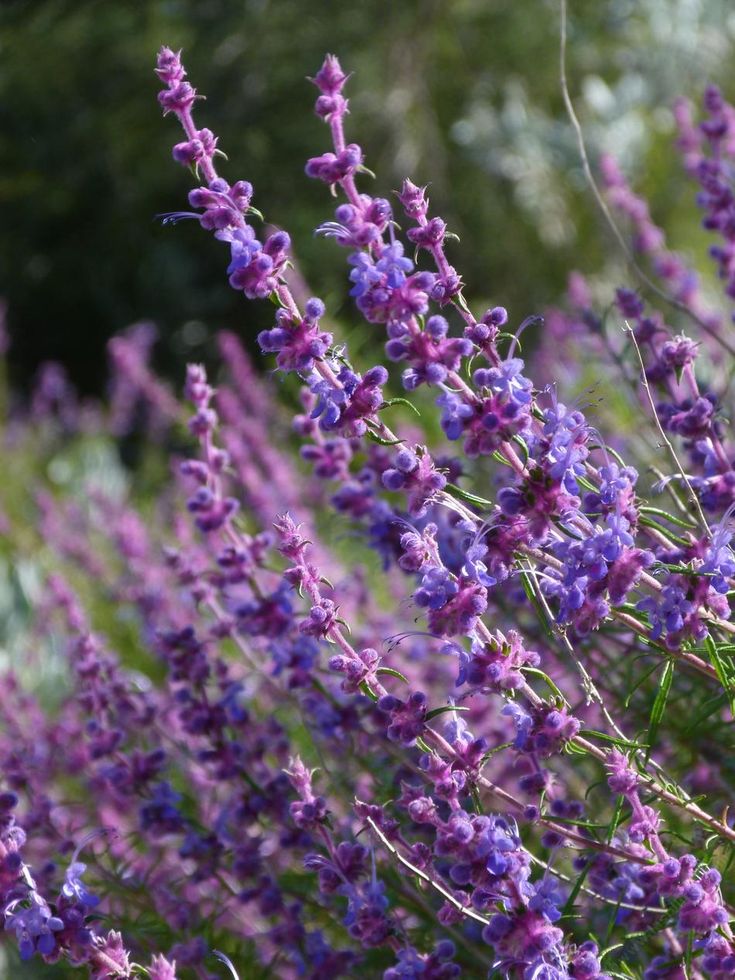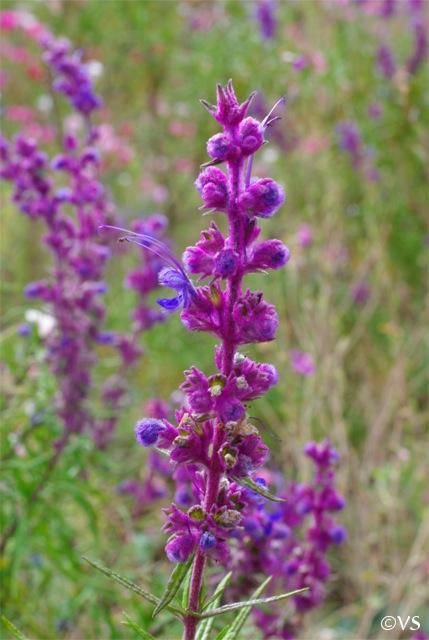Trichostema lanatum

Trichostema lanatum, commonly known as Woolly Bluecurls, is a captivating native plant species found in the coastal regions and inland areas of California.
Woolly Bluecurls are cherished for their distinctive appearance, fragrant foliage, and ecological significance, prized in both wild and cultivated settings.
In this comprehensive article, we will explore the botanical intricacies, habitat preferences, life cycle and care guidelines for Trichostema lanatum.
Botanical Description
Woolly Bluecurls is a striking perennial shrub characterized by its aromatic, woolly foliage and distinctive blue to purple flowers.
The plant typically grows to a height of 2 to 3 feet (60 to 90 cm) and features branching stems covered in dense, woolly hairs.
The leaves are lance-shaped, gray-green in color, and densely covered in fine hairs, giving them a velvety texture.
The flowers of Woolly Bluecurls are tubular in shape, with a curling appearance, and emerge in dense clusters at the tips of the stems.
They are adorned with vibrant blue to purple petals and attract a variety of pollinators, including bees, butterflies, and hummingbirds.
Habitat and Distribution
Woolly Bluecurls are native to a variety of habitats in California, including coastal scrub, chaparral, and open woodlands.
They are often found growing in well-drained, sandy or rocky soils, and are abundant in areas with full sun exposure.
Woolly Bluecurls thrive along the coast and extend into inland regions like the foothills of the Sierra Nevada and Coast Ranges.
They are an important component of native plant communities, providing habitat and food for a range of wildlife species.
Life Cycle and Phenology
As a perennial plant, Woolly Bluecurls follow a typical life cycle for shrubs in Mediterranean climates.
They begin growth in the fall, with new stems emerging from the base of the plant and continuing to grow throughout the winter and spring months.
Flowering typically occurs from late spring to early summer, with the peak bloom period varying depending on local environmental conditions.
After flowering, the plant may produce seed capsules containing numerous small seeds.
During the hot, dry summer months, Woolly Bluecurls may enter periods of dormancy, conserving water and energy until cooler, wetter conditions return in the fall.
Ecological and Cultural Importance
Woolly Bluecurls play a crucial ecological role in California's native plant communities, offering habitat and sustenance for diverse wildlife species.
The plant's aromatic foliage serves to deter herbivores, while its flowers attract pollinators such as bees and butterflies, thereby enhancing local ecosystem health.
Drought-tolerant gardens, native plant landscapes, and restoration projects often feature them, adding color, texture, and fragrance.

Caring for Trichostema lanatum
Sunlight
Plant Woolly Bluecurls in a location that receives full sun to partial shade, as they prefer abundant sunlight for optimal growth and flowering.
Watering
During the growing season, moderate watering is essential, allowing the soil to slightly dry between watering to prevent root rot. Avoid overwatering, especially in summer dormancy.
Soil
Plant in well-drained, sandy or rocky soil with a neutral to slightly acidic pH.
Woolly Bluecurls thrive in dry, nutrient-poor soils but may struggle in heavy clay or waterlogged conditions.
Mulching
To help retain soil moisture and suppress weeds, apply a layer of organic mulch, such as wood chips or compost, around the plant's base.
Avoid covering the stems or foliage with mulch, as this can lead to rot and disease.
Pruning
Prune dead or damaged stems as needed to maintain the health and appearance of the plant.
Woolly Bluecurls may benefit from occasional shaping to encourage bushy growth and prevent legginess.
Following these care guidelines enables cultivating vibrant Woolly Bluecurls, aiding native species conservation and enhancing California's natural landscapes.
Woolly Bluecurls enchant with beauty and ecological significance.
Leave a Reply
You must be logged in to post a comment.